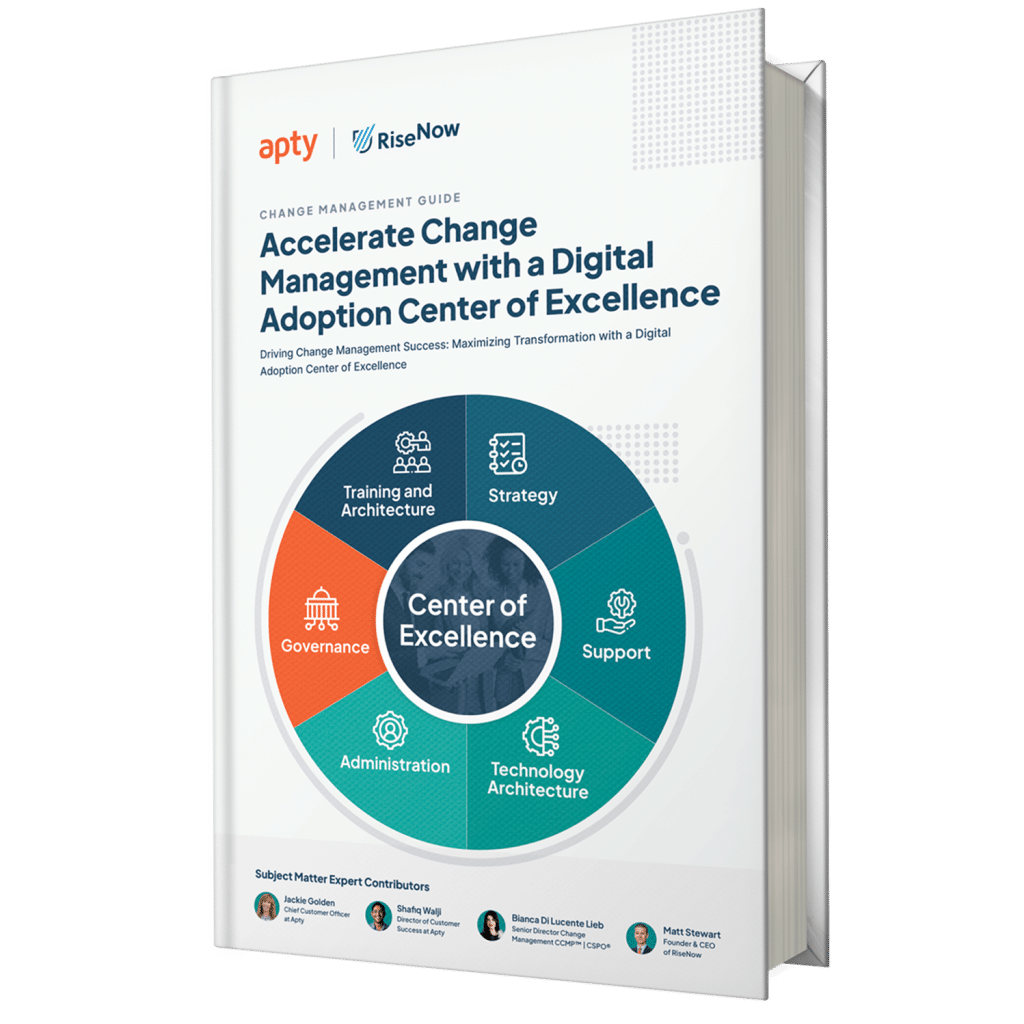Supply Chain Management (SCM) technology is essential in today’s global marketplace, helping businesses coordinate and analyze their supply chain operations. With SCM implementation becoming a critical aspect for many organizations, it’s no surprise that the global supply chain management market was valued at $27.2 billion in 2022. It’s projected to reach $75.6 billion by 2032, growing at a CAGR of 10.9% from 2023 to 2032.
The proper utilization of SCM can result in significant improvements in inventory management, supplier collaboration, transparency & visibility, logistics, and more. However, achieving these benefits requires careful planning and investment. Successful SCM implementation hinges on a well-considered approach and strict adherence to a carefully mapped strategy.
42% of supply chain leaders plan to make significant changes to their supply chain organizational structure over the next 12 months, and another 40% cite moderate changes.
Enterprises seeking to enhance their supply chain functions should focus on a meticulous SCM implementation plan, as it can transform and optimize the entire supply chain system.
What is the SCM Implementation Process?

The SCM implementation process refers to a systematic approach taken by an organization to integrate and align its supply chain operations with overall business goals. This process often involves detailed planning, technology selection, training, and continuous evaluation to ensure that the SCM system functions effectively and efficiently.
How to implement a SCM system?
Implementing a Supply Chain Management (SCM) system can be complex and demanding. It requires a significant investment of time, effort, and resources to ensure a seamless integration into existing business operations. Careful planning, precise resource allocation, and effective management systems must be implemented to achieve desired results in SCM implementation.
Key stakeholders from different departments, such as Procurement, Logistics, Operations, Inventory Management, and even Sales & Marketing, should be involved in the core implementation team when planning the SCM implementation. Their combined expertise and cross-functional collaboration can foster an understanding of the entire supply chain, ensuring that the system aligns with the business’s strategic goals and day-to-day operational needs.
Only 17% of executives say their company’s investments in supply chain technology have fully delivered the expected results.
This unified implementation strategy can streamline the process and reduce potential obstacles, setting the stage for efficient and effective SCM integration. By including insights from various functional areas and leveraging their unique perspectives, businesses can ensure that the SCM system is well-suited to their specific requirements and contributes positively to overall supply chain efficiency.
7 Steps for a Successful SCM Implementation
The seven steps for a successful SCM implementation, and they are:
Assessment and Planning: Establishing Objectives
Understand Business Needs:
Before initiating SCM implementation, conducting a comprehensive analysis of the organization’s supply chain needs is vital. This involves mapping out existing processes, identifying bottlenecks, understanding the strategic goals, and defining how the SCM system can facilitate these objectives.
Select the Appropriate SCM Tools:
Selecting the right SCM tools is a complex task that requires careful consideration of various factors such as functionality, scalability, cost, integration capabilities, and more. Utilizing a Digital Adoption Platform (DAP) in this process can “supercharge” the tools by ensuring smoother Technology adoption and more efficient utilization.
DAPs provide guided Contextual on-screen experiences, facilitating the adoption of complex tools by guiding users through processes and functionalities. In the context of SCM tools, a DAP can:
- Enhance User Experience
- Boost Productivity
- Facilitate Change Management
- Provide Analytics and Insights
Relevant Read: Top 10 SCM Software for Your Enterprise
Data Preparation: Ensuring Data Quality
Cleanse and Organize Data
Data integrity is the cornerstone of any successful SCM system. This step involves scrubbing data to eliminate inaccuracies, redundancies, and inconsistencies. Thorough data cleaning improves decision-making and ensures that the SCM system has quality information to work with.
Set Key Performance Indicators (KPIs)
Establishing KPIs aligned with organizational goals allows for the measurement of the SCM system’s effectiveness. KPIs might include metrics related to:
- Cost reduction.
- Lead time reduction.
- Inventory accuracy.
- Customer satisfaction.
System Configuration and Customization: Aligning with Business Needs
Configure the System
Configuring the system involves adjusting various settings within the SCM software to align with the company’s specific workflows and processes. This includes setting permissions, integrating with existing systems, defining workflow rules, and more.
Customize as Required
Customization goes beyond standard configuration by adapting the system to unique business requirements. It may involve developing custom modules, interfaces, or integrations with other enterprise systems.
Training and Support: Building User Competency
SCM systems often encompass complex functionalities and workflows. Building user competency is essential for ensuring employees can navigate and utilize the system effectively. Here’s where a Digital Adoption Platform (DAP) plays an essential role:
- Personalized Learning Paths
- On-Demand Support
- Performance Tracking and Analytics
- Integration with Existing Training Materials
Relevant read: An Ultimate Guide to Your Employee Training Program
Provide Training
Training is essential to ensure that users can effectively utilize the new system. This includes creating detailed training materials, conducting workshops, and providing hands-on experience with the system. 31% will retrain employees for different jobs because their current role will no longer be necessary. Training should be tailored to different user roles and responsibilities within the organization.
Offer Support

Accelerate Change Management with Digital Adoption Center of Excellence

Post-training, a robust support structure must be in place to assist users. This includes a helpdesk, online resources, FAQs, a Digital Adoption Platform, and continuous on-site support during the transition phase.
Go-Live and Monitoring: Successful Deployment
Deploy the System
Going live with the SCM system is a critical milestone. It requires meticulous planning, coordination with various teams, meeting all prerequisites, and conducting final testing to confirm that the system is ready for launch.
Monitor Continuously
Post-launch, continuous monitoring is essential to ensure the system operates as intended. This involves:
i. Tracking performance against set KPIs –
ii. Monitoring system health.
iii. User engagement.
Performance Evaluation: Continuous Analysis
Evaluate Regularly
Ongoing evaluation of the SCM system ensures that it continues to meet organizational needs. Regular assessments can identify areas of improvement, uncover potential issues, and ensure that the system is contributing positively to the business’s goals.
Identify Areas for Improvement
Regularly identifying areas for improvement enables the organization to fine-tune the SCM system. This might involve enhancements to user experience, process optimization, functionality expansion, and more.
Continuous Improvement: Adaptation and Growth
Stay Updated with Trends
The business landscape is ever-changing. Regularly reviewing industry trends and technological advancements ensures that the SCM system stays current and competitive.
According to PwC Main objectives with supply chain tech investments, driving growth (53%), and optimizing costs (51%) outpaced several other possible goals.
Iterate and Improve
SCM implementation is not a one-off project but an ongoing effort. Regular iterations, updates, continuous monitoring, and feedback loops create a process of continuous improvement, adapting the system to changing business needs and leveraging it as a strategic asset.
Continuous improvement is integral to maintaining an effective SCM system. Regular review and refinement enable the system to adapt to changing business dynamics. Here’s a look at common SCM processes that might need improvement and how digital adoption can assist in enhancing them:
- Inventory Management
- Demand Forecasting
- Supplier Relationship Management
- Order Processing
- Returns Management
However, implementing an SCM system is not a straightforward task. It requires a careful blend of strategic planning, technological acumen, organizational alignment, and continuous improvement. This complexity warrants a methodical approach to ensure the SCM system aligns with the business’s unique goals and challenges.
The above elaboration of the seven-step SCM implementation process provides a comprehensive guide for organizations embarking on this significant journey. These steps encompass everything from initial assessment and planning to continuous adaptation and growth, offering a blueprint for successful SCM implementation. By following this structured approach, organizations can transform their supply chain operations, achieving not just operational efficiency but also strategic alignment with their broader business objectives.
By following these seven detailed steps, organizations can transform their supply chain into a robust, agile, and value-driven part of their business.
Barriers to SCM Implementation
Implementing SCM is not without challenges. Here are 10 common barriers that organizations might face:
- Resistance to Change: Employees may resist new systems, leading to slow adoption.
- Lack of Alignment with Business Objectives: If the SCM system does not align with overall business goals, it may lead to inefficiencies.
- Inadequate Training: Without proper training, users may struggle to adapt to the new system.
- Data Quality Issues: Poor data quality can hamper decision-making and efficiency.
- Complexity of Integration: Integrating the SCM system with other business systems can be a complex task.
- Cost Constraints: Budget limitations may restrict options for system customization or training.
- Inadequate Stakeholder Engagement: Lack of involvement from key stakeholders may lead to poor system adoption and effectiveness.
- Technology Compatibility Issues: If the chosen software is incompatible with existing technology, it may hinder integration.
- Lack of Expertise: Without experienced SCM professionals, implementation can become a challenging process.
- Regulatory Compliance: Navigating legal and regulatory requirements can complicate SCM implementation.
Apty’s Comprehensive Approach to SCM Implementation
Supply Chain Management (SCM) has seen growing complexities, calling for robust solutions tailored to specific business needs. Apty’s approach to these challenges includes ensuring supply assurance, handling product complexity, enhancing supplier relationships, improving customer service, aligning procurement processes, optimizing network design, fostering goal collaboration, working on capital optimization, reducing supply lead time, mitigating risk, and streamlining cost management.
Businesses leverage the Digital Adoption Platform (DAP) to overcome SCM implementation and adoption challenges. Apty DAP can seamlessly integrate into your existing SCM system and provide Contextual in-app guidance to help your employees complete their everyday tasks.
What sets Apty’s approach apart is the integration of training, analytics, automation, and real-time insights that align with specific industry needs. By focusing on key areas such as sales forecasting, supplier relationship management, inventory levels, and network design, Apty offers solutions that are not confined to one-size-fits-all but adaptable to different business contexts. This enhances the supply chain’s efficiency, agility, and resilience without over-promising or resorting to hyperbole.
Apty’s role in SCM implementation illustrates the importance of a nuanced and comprehensive approach. By recognizing and addressing the diverse challenges faced by modern supply chains, Apty’s solutions provide practical insights and tools that can be leveraged across different business scenarios. Their focus on SCM’s strategic and operational aspects makes them a valuable partner for organizations aiming to transform their supply chain processes.












